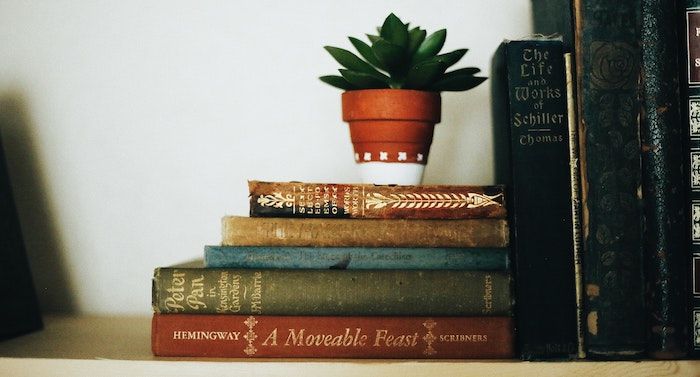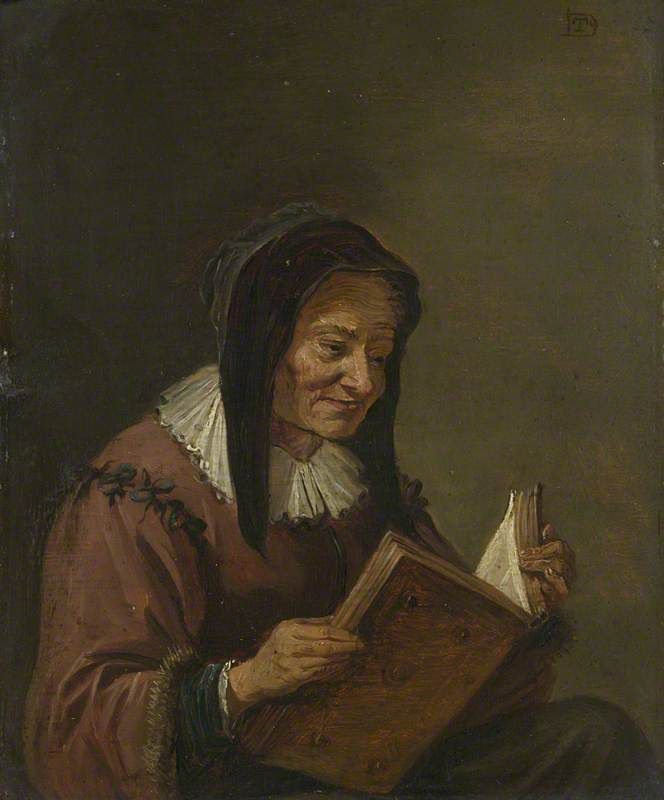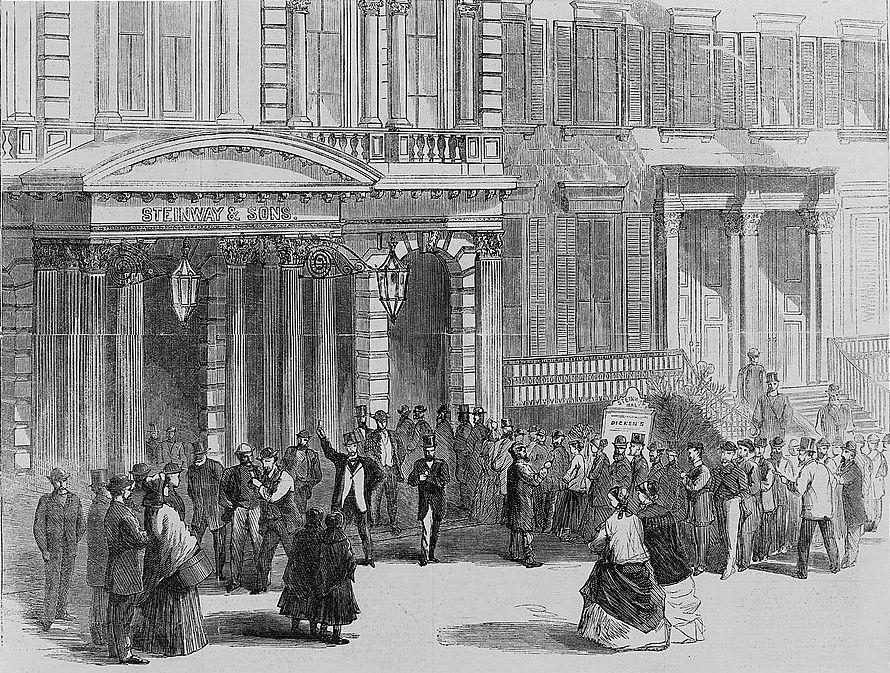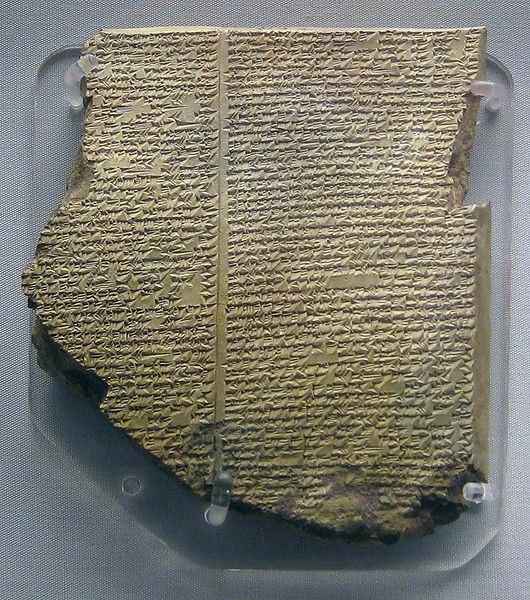
The history of reading is a topic that probably interests all readers. Reading what someone else has written brings with it a sense of continuity and solidarity. This sense of solidarity is strengthened when we get to know how others read. What we read and how it affects us can reflect our personalities and our experiences as individuals. The history of readers and reading can offer much insight into the nature and history of the society as a whole. The topic is a fascinating one, and one that has several absorbing aspects. Join us as we try to construct the bare bones of the process of the evolution of readers and reading over the course of history.

VERY PRACTICAL BEGINNINGS
In the 4th Millennium BCE, with agricultural prosperity and increasing complexity of social structures, urban centers started developing in Mesopotamia and an unknown individual changed the course of human history by using some squiggles on clay to represent a goat and an ox. There, at the birth of the concept of writing – the representation of spoken sounds using visual signs – its inseparable twin, the art of reading, was also born. Writing was initially used to keep records of transactions that involved several entities and were carried out across vast distances. The earliest known clay tablets used picture-like signs to depict lists of goods.
Around 2600 BCE, the cuneiform script developed and writing became more versatile. It was used to document laws and narrate deeds of kings, in addition to keeping records of transactions. In the cuneiform script, each syllable was represented by a different sign, and the number of characters one had to learn in order to be able to read ran into hundreds. To be a scribe in ancient Mesopotamia was an enormous achievement. If a king could read, he made sure to boast about it in his inscriptions. An elaborate system of schools trained young scribes from an early age. The ancient pioneers of writing and reading were aware – and in awe – of the potential of this new form of communication. In ancient Mesopotamian culture, birds were considered sacred because the marks their feet made on wet ground resembled cuneiform characters. The patterns made by the wandering feet of birds were believed to be messages from the gods, waiting to be deciphered.
As the ancient writers discovered their power to make and alter myth and history, the first works of literature were written. The earliest known author named in history is a woman, the Akkadian princess and High Priestess Enheduanna, who composed temple hymns around 2300 BCE and signed her name onto the clay tablets on which she inscribed her works. It was around this time that writers began to explicitly address the absent “dear reader” in their writings in specific acknowledgement of reading as a mode of inter-temporal communication.
READING AS PERFORMANCE
The earliest written texts were meant to be read out loud. The characters were written in a continuous stream, to be disentangled by the skilled reader when reading out loud. Punctuation was used for the first time only around 200 BCE, and was erratic well into the middle ages. The masses were still illiterate, and written material only reached them through public readings. Public readings took place in royal courts and monasteries. The performances of jugglers and storytellers were in vogue in the 11th and 12th centuries CE. Reading from a book was considered pleasant dinnertime entertainment, even in humbler homes, from the Roman times to the 19th century.
In the 5th century BCE, the famous Greek historian Herodotus used the platform of the Olympics to read his latest works. Authors’ readings were a social convention in Rome as early as the first century CE. Public enthusiasm for these readings might have waxed and waned across centuries, but the tradition has endured. Popular authors have embraced this tradition with varying degrees of fervor, ranging from Charles Dickens’s carefully planned readings to the uninterested monotones of others. For some authors, like Jean Jacques Rousseau, whose works had been banned by the pre-revolutionary French authorities, readings at the houses of friends was the only way to seek an audience.

Even as education became more widespread, being read to was a major avenue for entertainment and acquiring knowledge, especially for women. Well into the 19th century, women were encouraged to acquire only very minimal education, and their scholarly ambitions were frowned upon. Being read to by family and friends was acceptable, and provided women some semblance of an outlet for their curiosity and hunger for stories. Once primary education became more accessible and acceptable, younger members of the family read to the elders, in a sweet reversal of the classic grandma’s tales.
READING SILENTLY
Given how early texts were meant to be heard rather than seen, the act of reading silently remained a curiosity. In 330 BCE, when Alexander the Great silently read a letter from his mother in front of his troops, the already awestruck men were further stunned by their general’s otherworldly capabilities. Much later, in his Confessions, written in 4th century CE, St. Augustine marvels at how his mentor, St. Ambrose, managed to grasp the meaning of a text while “his voice was silent and his tongue was still”. The first regulations requiring scholars to work in silence in monastic libraries date from the 9th century. The ancient and medieval libraries until then, and probably for a considerable time after that, would have been very different to the modern concept of a quiet place to study. Next time you daydream about reading at the library of Alexandria or the library of Celsus (who doesn’t, right?), do not forget to factor in the din from the very loud scholarly explorations going on around you.
With increased literacy, better punctuation, and books that were made accessible to the general public by the inclusion of pictures or the simplification of language, silent reading became the norm. More and more readers began to be able to form a personal connection with the written text, without someone else’s voice and interpretation acting as intermediaries. Silent reading made reading a private activity – making room for more options in the choice of a reading nook. Chaucer recommended reading in bed in the 14th century, Omar Khyyam and Mary Shelley advocated outdoor reading, while Henry Miller and Marcel Proust preferred the absolute solitude of the bathroom.
PRINT REVOLUTION

The earliest printing technology originated in China, Japan, and Korea. The imperial state of China produced a large volume of printed material, printed by rubbing paper against inked woodblock, to sustain its extensive bureaucratic system. The knowledge of print technology reached the western world around the 13th century, and woodblock printing attained widespread popularity by the 15th century. The increased ease at which books could be produced by printing, the durability of the final products compared to handwritten manuscripts, and the ever-rising demand for books led to further interest in the development of new printing techniques. In the 1430s, Johannes Gutenberg developed the first mechanical printing press at Strasbourg, Germany. The press was operational in Mainz by the 1450s, and was printing copies of what would later come to be known as the Gutenberg Bible.
Once the inevitability of the eventual ubiquity of print and reading became apparent, churches all over Europe embarked on a spree to educate the masses, and through the establishment of village schools, literacy grew. Booksellers printed copies of popular ballads and folklores to increase public appetite for their wares. Small, cheap editions like the English chapbooks and French Biliotheque Bleue were peddled by travelling salesmen. Periodicals started being published in the early 18th century, increasing further the population of dedicated readers. It was around this time that the novel as a literary form took firm root in France and England. When, in 1849, Charles Dickens’s Pickwick Papers was serialized in a magazine, the attraction of the novel was combined with the affordability of magazines, and readers could live in the story for months.
LIBRARIES

The Assyrian ruler Ashurbanipal put together a library of clay tablets in Nineveh (modern-day Iraq) in the 7th century BCE. The collection was amassed at the height of the Assyrian empire, mostly through plunder. The library housed original tablets dating back to the 2nd millennium BCE, featuring works written in both Sumerian and Akkadian. Specialized scribes were employed to produce copies of important works. Fiercely possessive of his collection, Ashurbanipal threatened anyone who dared misplace his books with terrible fates. Centuries later, in 331 BCE, Alexander the Great founded the city of Alexandria in Egypt. Within years Alexandria evolved into a multicultural city with a complex bureaucracy. Alexander’s successor, Ptolemy I, founded the library of Alexandria with the short-term purpose of organizing the vast reams of documents that had been stockpiled in the city, and the ostentatious long-term purpose of housing all the knowledge in the world. In order to achieve this goal, all ships stopping at Alexandria had to surrender all books on board to be copied (or retained) at the library.
The history of cataloguing or organizing written material is even older than the very first formal libraries. In the ancient Sumerian language, record keepers were called “Ordainers of the world”. The first ever catalogue of books is the catalogue of the Egyptian “House of Books” dating back to 200 BCE. The library of Alexandria was the laboratory for a lot of early experiments in library science, mainly through the works of Callimachus of Cyrene, who catalogued the library of Alexandria in the 2nd century BCE. He arranged titles into lists, or pinakoi, according to categories including drama, lyric poetry, legislation, history, medicine, philosophy, and miscellanies. He was also the first librarian in history to use an alphabetical ordering for arranging the books within these genres. Though libraries remained highly exclusive spaces for centuries after these developments, accessible and useful only to privileged and skilled scholars, the concept of a comprehensive library catalogue would prove invaluable to generations of readers roaming the aisles of these storehouses of information in search of knowledge.
The establishment of lending or circulation libraries, coupled with the advent of new printing technologies, were developments that revolutionized reading for common people. The 18th century saw a proliferation of these institutions that actually allowed readers to take items in their collection home, both in Europe and in North America. Readers made use of this opportunity individually, as well as collectively by organizing themselves into reading groups and book clubs.
READING AS REBELLION
As we have seen so far in our short exploration of the history of reading, the power of the written word, which is in turn transferred onto its readers, has been recognized since ancient times. It is therefore no surprise that authority figures throughout history have tried to prevent the people they oppress from accessing reading material and even literacy. For these marginalized groups, reading, against all odds and in severely adverse circumstances, has been a courageous act of rebellion and resistance.
Enslaved people, both in the dominions of the British Empire and in the Americas, were denied access to reading for centuries. They still managed to learn to read, often risking their lives in the process – unobserved and using ingenuous methods of learning. The literature that many of these people taught themselves to read and write went on to become a potent weapon in their battle against slavery and oppression.
Women’s reading and intellectual ambition was discouraged, often violently, in societies all over the world, despite some of the earliest poets and authors having been women. Yet, largely cut off from the outer world and forced into the routines of domesticity, generations of women taught themselves to read and write. They wrote copious volumes about their own experiences, many of which stood the test of time and are now recognized as classics. Women in China and Japan invented their own dialects used specifically for communication between women. In India, Rashsundari Devi, the author of the first autobiography in Bengali, taught herself to write by scribbling letters in the soot left over in the traditional wood burning oven after the day’s arduous cooking. All-women book clubs that discussed literature from the female point of view have been mentioned as early as the 15th century, in the French book about medieval women’s beliefs, The Distaff Gospels (Les Evangiles des Quenouilles).
Totalitarian rulers have always recognized the importance of ignorance in keeping people subservient to exploitative regimes, and have been placing blanket bans on books that go against the version of reality that they wish to project, with gusto that has been undiminished by history. The works of Protagoras were burned in ancient Athens; Chinese emperor Shih-Huang Ti wanted to burn everything written before his time so that history began with him. In 1559 the Roman Catholic Church began maintain an Index of Forbidden Books. In Nazi Germany, the government propaganda machine made a spectacle of book burning, with each book being burnt receiving its own individual epigram. Colonial rulers tried to ban and prevent the circulation of printed material that would question the legitimacy of their rule in colonies all over the world. The power of the written word has also been misused, and is still being misused, to spread false information and hatred.
But the international community of readers has endured. At a large scale they have shown themselves equal to the responsibility that comes with the power of being readers. Over the course of history readers have demanded better from the things they read – and have gone ahead to write it themselves.
The main reference consulted in writing this article is A History of Reading by Alberto Manguel, a delightfully well-written account of the evolution of the reader through the ages. For more bookish history, check out this post about the history of cookbooks and this one about why books evolved to be the rectangles that we are accustomed to now. Interested in ancient libraries that you can still visit? Check out our roundup here.
https://bookriot.com/history-of-reading/?utm_source=Sailthru&utm_medium=email&utm_campaign=Saturday%20Long%20Reads%201921&utm_term=BookRiot_TheRiotRundown_DormantSuppress
No comments:
Post a Comment